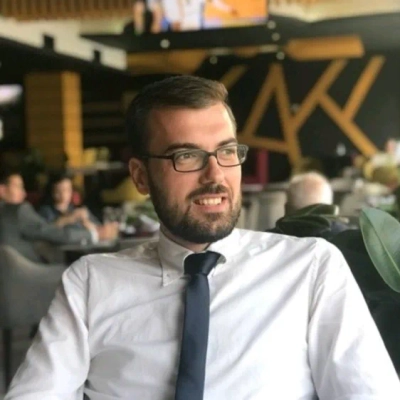How Do You Integrate the Latest Leadership Theories as a Business Coach?
Discover the cutting-edge strategies for integrating leadership theories into business coaching, distilled from the wisdom of renowned experts. This article offers a practical guide to adopting adaptive, neuroscience-based, and emotionally intelligent approaches for transformative results. Learn how to apply expert insights to empower teams, navigate real-world challenges, and drive leadership success in any organization.
- Integrate Adaptive Leadership for Flexibility
- Leverage Neuroscience and Emotional Intelligence
- Combine Theories with Real-World Application
- Focus on Adaptive Leadership and Emotional Intelligence
- Apply Strengths-Based Leadership
- Implement Agile Leadership with OKR
- Adopt Servant Leadership for Team Empowerment
- Make Theories Practical for Real-World Challenges
- Align Theories with Empowering Women
- Use Transformational Leadership for Team Motivation
- Incorporate Transformational Leadership in Real Estate
- Tailor Theories to Client Challenges
- Inspire Teams with Transformational Leadership
- Adapt Theories to Industry-Specific Challenges
- Focus on Actionable Transformational Leadership
- Emphasize Servant Leadership for Team Success
- Prioritize Client Needs with Servant Leadership
Integrate Adaptive Leadership for Flexibility
At Pivotal Growth, we continuously integrate cutting-edge leadership theories into our coaching practice through our adaptive, data-driven approach. A prime example is our incorporation of the "Adaptive Leadership" theory developed by Heifetz and Linsky. We've seamlessly integrated this into our diagnostics and action plans, helping leaders identify and address both technical and adaptive challenges within their organizations.
Recently, we worked with a high-growth and performance company where our diagnostic assessment revealed critical gaps in their traditional management approach. By applying the Adaptive Leadership framework, we guided their leadership team to distinguish between technical problems (solvable with existing know-how) and adaptive challenges (requiring new learning and behaviors) that align with modern leaders' needs.
This resulted in a more flexible leadership approach, enabling the company to navigate complex changes more effectively. Through coaching we cultivate our leaders' ability to empathize with their teams, recognizing that change is challenging but teams will do better with inspiration.

Leverage Neuroscience and Emotional Intelligence
At Be Bold Executive Coaching, I integrate the latest leadership theories by leveraging neuroscience-based discovery and emotional intelligence to help clients map their strengths and identify areas for growth. A great example is my partnership with Kiian, a neuroscience-focused coaching organization. Their approach includes a comprehensive discovery process, a 90-minute personalized readback for each client, and detailed reports on job alignment, skill development, and soft skills—which have become just as critical, if not more so, than technical skills at leading companies like Delta, Apple, Amazon, and GM.
The Kiian platform also provides real-time micro-coaching moments. For instance, a CFO preparing to deliver difficult financial news to their CEO can access tailored tips on how to communicate effectively with that individual. It guides them on what to observe nonverbally and what to listen for in their conversation. It's transformative coaching designed for real-world leadership moments.
In an ever-changing business landscape, these soft skills show a leader's unique leadership skills and attributes allowing them to stand out in a crowded marketplace.

Combine Theories with Real-World Application
In my coaching practice, I integrate the latest leadership theories by combining them with real-world business application and tailoring them to the unique challenges of my clients. Leadership is constantly evolving, and staying updated through research, ongoing education, and professional experience allows me to deliver actionable insights rather than just theoretical frameworks. For example, I often draw on transformational leadership principles, which emphasize inspiring and motivating teams through a shared vision, combined with emotional intelligence training. These concepts align perfectly with what I've seen in hundreds of businesses: the most successful leaders are those who can connect with their teams on a human level while maintaining clarity and focus on long-term goals.
One specific example of this integration involved working with the CEO of a mid-sized logistics company in the UAE who was struggling with high turnover and disengaged employees. After identifying a lack of trust and connection between leadership and staff, I implemented a program rooted in Daniel Goleman's emotional intelligence framework and elements of transformational leadership. We worked on improving the CEO's self-awareness and communication skills while crafting a clear, inspiring vision for the company. Using my own experience in building and leading teams, I introduced actionable techniques, such as one on one feedback sessions and inclusive decision-making processes, that aligned with these theories. Within six months, employee satisfaction scores increased, turnover dropped significantly, and productivity levels reached an all time high. My ability to combine these leadership theories with hands-on strategies, backed by years of business ownership and an MBA in finance, was key to this outcome. This is how I help leaders not only understand these concepts but implement them effectively to achieve real, measurable results.
Focus on Adaptive Leadership and Emotional Intelligence
In my coaching practice, I integrate the latest leadership theories by focusing on adaptive leadership and emotional intelligence, two frameworks that are particularly effective in today's fast-paced, ever-changing business environments. One key way I apply these theories is by helping my clients, often executives and team leaders, develop a deeper self-awareness and adaptability. By doing so, they can better respond to the challenges and dynamics of modern leadership.
For example, I recently worked with a client who was struggling to keep their team engaged and motivated after a major organizational change. I introduced them to the concept of adaptive leadership, which emphasizes the need for leaders to be flexible and encourage problem-solving and innovation within their teams. We used this framework to focus on building a culture of psychological safety, where team members felt comfortable sharing their concerns and ideas without fear of retribution.
Through regular coaching sessions, we also worked on improving emotional intelligence. I encouraged my client to practice empathy and active listening, which allowed them to connect more meaningfully with their team. They also learned how to recognize and regulate their emotions in high-stress situations, which ultimately helped them maintain composure and lead by example.
This integration led to tangible improvements. For instance, the client saw a noticeable increase in team morale and engagement within a few months. Employees were more proactive in sharing ideas, and the team became more collaborative, even in the face of continued change.
By combining modern leadership theories like adaptive leadership with emotional intelligence, I was able to provide a coaching approach that aligned with my client's needs and current challenges, helping them navigate leadership complexities with a clear, effective strategy.

Apply Strengths-Based Leadership
I've found that leadership theories are only as valuable as their practical application, so I focus on integrating them in ways that feel real and actionable for my team. One concept I've drawn on heavily is the idea of strengths-based leadership—identifying what people do best and helping them lean into those strengths rather than trying to fix every perceived weakness.
For example, during a recent restructuring project at Nutun, I worked closely with a team member who was brilliant at strategic thinking but struggled with the operational side of things. Instead of forcing them into a box that didn't suit them, I paired them with someone who excelled in execution but wasn't as strong on strategy. Together, they formed a team that balanced each other out perfectly, and we saw incredible results.
I also weave in coaching techniques like active listening and situational leadership. Some team members thrive on autonomy, while others need more guidance—being flexible in how I support each person has been key to their development and the team's success.
Theories are great, but they need to be tailored to fit the people and the context. At the end of the day, it's about creating an environment where people feel empowered to grow and contribute their best.

Implement Agile Leadership with OKR
My approach to leadership coaching has been shaped by my experiences from N26 to my current role at Spectup, where we work with founders who need to evolve quickly from innovators to leaders. One of the most effective methods I've implemented comes from my certification in Agile Leadership with OKR, which I combine with real-world lessons from managing startup teams. For instance, when I worked at Deloitte's Innovation & Ventures team, I saw how traditional leadership models often fell short in fast-moving startup environments. Now at Spectup, we help founders set clear objectives while maintaining the flexibility needed in startup environments - it's about finding that sweet spot between structure and adaptability.
I remember working with a founder who was struggling to delegate - a common issue I first encountered during my time at BMW Startup Garage. We implemented an OKR framework that helped them trust their team more while maintaining strategic oversight. The key wasn't just applying theory but adapting it to each founder's unique situation and personality. This practical approach has helped our clients avoid the typical startup pitfalls, like the 35% failure rate due to poor product-market fit, which often stems from leadership issues.

Adopt Servant Leadership for Team Empowerment
As the Founder and CEO of Zapiy.com, I believe that leadership isn't just about guiding others-it's about evolving with them. To keep my approach fresh and impactful, I actively integrate the latest leadership theories into my coaching practice. One framework I've found particularly transformative is servant leadership, which emphasizes prioritizing the needs of your team to foster growth and empowerment.
For instance, I recently applied this theory while coaching a department head who struggled with delegating tasks effectively. We worked together to shift their mindset from being the "central problem-solver" to being a facilitator who empowers their team to make decisions. Drawing from servant leadership principles, I guided them to start each week by asking their team members what support they needed to succeed. They also began setting aside time for individual check-ins focused on professional development.
The result? Their team not only became more self-reliant but also more engaged, and the manager found they had more bandwidth to focus on strategic goals. This ripple effect reinforced how adopting a leadership theory isn't about rigid application-it's about tailoring the principles to meet real-world challenges.
For anyone looking to integrate leadership theories into coaching, my advice is to keep it practical and relatable. Frame theories as tools, not rules, and work collaboratively to apply them in ways that align with your client's goals and organizational culture. Theories are a starting point, but the real magic happens in how you adapt and implement them.
Make Theories Practical for Real-World Challenges
When I bring leadership theories into coaching, I focus on making them practical for the leader's real-world challenges. It's not about explaining a concept but showing how they can use it to improve their day-to-day work. With a leader who struggled to keep their team engaged, we worked with ideas from transformational leadership. They started talking more about shared goals during meetings and recognizing individual contributions in ways that felt meaningful. Over time, this helped the team feel more connected and motivated.
What really matters is making the theory fit the person and their situation. It has to feel natural, or it won't have an impact. I help leaders turn ideas into habits they can use every day, like how they communicate or the way they involve their team in decisions. That's where you see the real change happen, when the theory becomes part of how they lead, not just something they learn about.

Align Theories with Empowering Women
Integrating the latest leadership theories into my role at MBS is about aligning research-driven strategies with the mission of empowering women to feel confident and strong in their own skin. I believe that leadership is most impactful when it is rooted in authenticity, collaboration, and a clear vision, and I strive to embody these qualities every day as a co-founder of MBS. One leadership theory I frequently draw upon is servant leadership, which focuses on putting the needs of others first and fostering growth within a community. At MBS, this translates into creating a brand that not only offers high-quality athleisure but also inspires women to prioritize their well-being and embrace their inner strength. For example, when we were developing the "I Am" affirmation pieces, I collaborated closely with our team to ensure that every design reflected the core values of empowerment and self-confidence. I listened to feedback from our customers and team members, making adjustments based on their insights to ensure the line truly resonated with the women we aim to serve. This approach made the process collaborative and empowering for everyone involved, creating a product line that feels deeply personal and aligned with our mission. By integrating leadership theories like servant leadership into our day-to-day operations, I aim to create a culture at MBS where everyone-our team, our collaborators, and our customers-feels valued, supported, and inspired. It's about fostering a community that uplifts and empowers women to be their best selves, reflecting the heart of what MBS stands for.

Use Transformational Leadership for Team Motivation
By staying updated on research and applying these concepts to real-world coaching scenarios. For example, I use transformational leadership principles to help clients focus on inspiring their teams and creating a shared vision. One specific instance was when I worked with a manager struggling to motivate their team. I encouraged them to adopt a coaching mindset, fostering open communication and trust - key elements of transformational leadership. This shift led to improved team engagement and performance, proving the effectiveness of integrating modern leadership theories into coaching.

Incorporate Transformational Leadership in Real Estate
Transformational leadership is a prominent leadership paradigm that I have found to be successful in the real estate sector. Through support, encouragement, and effective communication, this philosophy aims to inspire and empower people to realize their greatest potential. It is my responsibility as a realtor, in my opinion, to establish a solid and trustworthy rapport with my clients in addition to selling houses. Applying transformational leadership principles has allowed me to do all of this and more.
I use active listening with my clients as one approach to incorporate this philosophy into my coaching practice. I take care to listen to their wants, needs, and concerns. I can help them make wise decisions during the house-buying or home-selling process by getting to know their goals and preferences. This method enables my clients to feel heard and appreciated in addition to helping me build a solid rapport with them.
Motivation is another component of the transformational leadership theory that I apply to my coaching work. For many people, the process of purchasing or selling a property can be intimidating and stressful. It is my responsibility as a realtor to maintain my clients' motivation and optimism during the process. I accomplish this by acknowledging and applauding their accomplishments, no matter how minor. In addition to raising their spirits, this motivates them to keep going.
This integration was demonstrated in particular when I worked with a young couple who were first-time homebuyers. They felt confused about the process and overwhelmed. I was able to understand and respond to their concerns by truly listening to them. I inspired them to envision their ideal home by recognizing their enthusiasm for acquiring their first house. Within a few weeks, we were able to locate their ideal home because this kept them motivated and focused.
I think setting an example is a key component of transformational leadership. It is my duty as a realtor to be informed, well-organized, and proactive in my approach. By continuously exhibiting these qualities, I create an example for my clients, increasing the likelihood that they will respect and adhere to my advice.

Tailor Theories to Client Challenges
I integrate the latest leadership theories into coaching by tailoring them to each client's unique challenges and goals. For instance, adaptive leadership, which emphasizes navigating change and uncertainty, is a powerful framework I often apply. By combining this theory with practical tools like reflective journaling, role-playing, and 360-degree feedback, I help clients turn abstract concepts into actionable strategies.
One example is a senior manager transitioning to a director role who struggled with balancing strategic vision and day-to-day operations. I guided her to apply adaptive leadership by implementing "safe-to-fail" initiatives, small experiments designed to test innovative approaches without significant risk. This method helped her build confidence, foster her team's resilience, and drive creativity. This approach develops essential leadership skills and ensures long-term growth by connecting theoretical insights with real-world applications, making the learning process impactful and sustainable.

Inspire Teams with Transformational Leadership
I integrate transformational leadership theory by focusing on helping clients inspire and motivate their teams through a shared vision. For example, I worked with a manager struggling to engage their staff during a major organizational shift. We used the theory's principles to identify their team's core values and align them with the company's goals. Through storytelling and transparent communication, they introduced the vision in a way that resonated personally with team members. This led to increased buy-in, reduced turnover, and improved morale during a challenging period. Applying these theories in practical, relatable ways turns abstract concepts into actionable results.

Adapt Theories to Industry-Specific Challenges
Integrating modern leadership theories into coaching begins with understanding the specific challenges my clients face in their industries. I use principles from transformational leadership, which emphasize adaptability and inspiring a shared vision.
In practice, this means tailoring strategies to not just motivate but align a team's goals with organizational objectives. For example, I coached a sales manager in the transportation industry who struggled with employee engagement. We focused on applying emotional intelligence concepts, like active listening and empathy, to build stronger team relationships. Over time, this approach improved morale and boosted performance metrics.
Another way is through situational leadership, where leaders adapt their management style to their team's readiness and capability levels. I guided a hospitality client to recognize the varying needs of her staff. For newer team members, we implemented more directive coaching, while with experienced employees, we transitioned to a supportive, collaborative approach.

Focus on Actionable Transformational Leadership
I integrate the latest leadership theories into my coaching practice by focusing on actionable principles that align with a client's specific challenges. For example, I've adopted aspects of transformational leadership theory, which emphasizes inspiring and motivating teams to exceed their expectations while aligning with a shared vision.
In practice, this meant working with a client to improve their team dynamics by identifying individual strengths and fostering a culture of open communication. We implemented strategies like regular recognition of contributions and encouraging team members to take ownership of their roles. This not only boosted morale but also increased productivity and alignment with the company's goals. By grounding coaching sessions in proven theories and tailoring them to real-world scenarios, clients see tangible improvements in their leadership effectiveness.
Emphasize Servant Leadership for Team Success
I integrate the latest leadership theories into my coaching practice by emphasizing servant leadership, which prioritizes empowering team members to achieve their full potential. For example, I incorporated ideas from Simon Sinek's theory of "Leaders Eat Last," focusing on creating a supportive environment where the team feels safe to take risks and innovate.
A specific instance involved coaching a department manager who struggled with micromanagement. Using servant leadership principles, we developed strategies for delegating tasks effectively while fostering trust. The manager began holding weekly one-on-one check-ins to address team concerns and encourage ownership.
As a result, team morale and productivity improved significantly. Adopt leadership theories that promote collaboration and trust, as they drive sustainable success.
Prioritize Client Needs with Servant Leadership
I apply leadership principles that emphasize putting others' needs first, particularly the concept of servant leadership. This approach is all about being a guide, helping clients make informed decisions while considering their best interests. For example, when working with clients on their estate planning, I take the time to listen to their concerns and truly understand their goals. Instead of simply providing legal advice, I focus on ensuring they feel supported and empowered throughout the process. This approach builds trust, strengthens relationships, and helps clients make decisions with confidence, knowing their legacy is in good hands.






